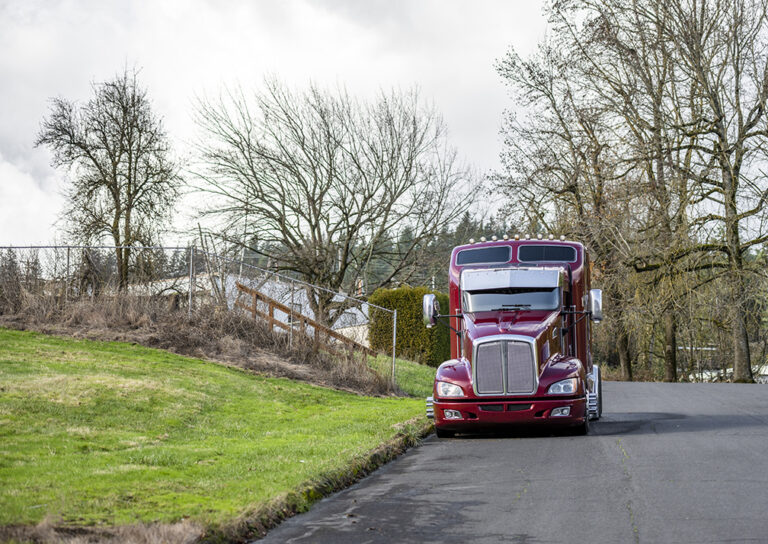“Detention is killing us.”
So read the headline on an article published by DAT Freight and Analytics in July 2016 detailing the results of a survey of 257 carriers and 50 freight brokers.
Whether or not the headline writers knew it, seven months before the article was published, Indiana professional truck driver Jerry Matson was critically wounded when he was shot in the stomach while parked on a dimly lit parking lot near a receiver where he was delivering a generator that would power equipment to be used for a football telecast at Oakland’s O.co Coliseum (currently branded as RingCentral Coliseum).
Because the receiver couldn’t accept the shipment until the next day, Matson asked to park in a well-lit area of the coliseum’s parking lot.
“No,” he was told, and was directed to park in that dimly lit, secluded location near the coliseum. That’s where he was when an assailant broke out a window on his tractor, shot him in the stomach, and robbed him.
Matson was able to call for help and survived the ordeal after at least two surgeries, but can never drive again.
You might think this has nothing to do with detention; it falls under the lack of truck parking. But the root issue here was detention.
Sending a professional truck driver into the unsafe hinterlands to spend the night instead of affording him or her a safe place at the consignee’s place of business could easily be part of any solution of resolving the driver detention problem that plagues drivers nationwide.
To drivers, that is just as important as being able to underload or pick up a load within a reasonable window (the industry standard of two hours is considered reasonable).
Perhaps both of those factors are reasons why Detention/Delay at Customer Facilities was ranked the No. 2 industry concern among drivers who participated in a 2021 survey by the American Transportation Research Institute, just behind two issues that tied for No. 1. The two No. 1 issues were — what else? — driver compensation and trucking parking.
Google the subject of truck driver detention and you’ll notice detention has been discussed, written about, commented about, and researched extensively for at least the past seven or eight years. It has been part of at least two pieces of transportation legislation. Drivers and carriers have written thousands of words about how the industry can correct the situation.
Driver safety is a factor. So is compensation.
Then why can’t a solution be found?
This question left one of the industry’s top brain trusts scratching his chin.
“The problem in solving the detention time crisis. That’s a great question,” said Truckload Carriers Association Senior Vice President of Safety and Government Affairs David Heller. “I don’t necessarily have a firm answer. I can tell you how to fix it, but I can’t tell you why it’s not fixed.”
But communication among carriers, drivers, shippers, and receivers and already available data are two possibilities he said.
“Plain and simple, what’s wrong with this issue is that drivers are being held up, thus affecting their opportunities to be productive,” said Heller.
Put math to it, he said.
“As an industry that averages six and a half hours of drive time per day out of the 11 hours that were federally regulated, that is a problem,” said Heller. “We’re leaving at least four and a half hours of drive time on the table, to say nothing about the fact that drivers — of that six and a half hours of drive time — are looking for parking for between 56 minutes to an hour of that time — not actively moving the freight, but looking for safe, secure truck parking.”
There’s simply no way the accepted two hours can be extended, Heller believes.
“I think there should be more communication between shippers, receivers, and carriers to set up programs like a drop-hook type of operation or adhere better to scheduling or recognize the shortfall in schedule,” he said.
The real catalyst for finally coming up with a solution is something that wasn’t readily available until 2019 — electronic logging devices (ELD).
“Thanks to ELDs, the trucking industry is now able to collect and utilize data about a driver’s day like never before,” shared Heller. “The data collected through ELDs can be used to record loading, unloading, and delay times. Because of the geolocation information recorded from each truck through the ELD, researchers can determine when the truck is at the shipper or receiver’s facility. This is highlighted through geofencing the area around a facility to know precisely where and when a truck is at a particular set of coordinates.”
While it might not necessarily seem logical to compare safety to detention, the two definitely have a relationship, he added.
“Studies show that a driver who has been detained for longer amounts of time has the tendency to drive faster after his detention event is open,” said Heller.
Heller pointed to data that show drivers who wait over two hours in detention time drive an average of 3.5 miles per hour faster than drivers who do not.
“Speeding is a leading cause of accidents, which all truckload carriers continuously work to avoid and for which no shipper or receiver wants to receive even partial blame,” said Heller. “These speed increases due to detention time spike at a 200-minute wait, or roughly 3.5 hours.”
Additionally, Heller said, a Wall Street Journal article noted that, “a 15-minute increase in average dwell time raises the expected crash rate for a truck by 6.2%, according to a 2018 report by the U.S. Transportation Department’s Office of Inspector General.”
Despite the fact that driver detention has long been an industry concern, it is solvable.
“But open communication among all industry stakeholders with a stake in this hunt is going to be absolutely essential,” concluded Heller.
Lyndon Finney’s publishing career spans over 55 years beginning with a reporter position with the Southwest Times Record in Fort Smith, Arkansas, in 1965. Since then he’s been a newspaper editor at the Southwest Times Record, served five years as assistant managing editor of the Arkansas Democrat-Gazette in Little Rock and from November 2004 through December 2019 served as editor of The Trucker. Between newspaper jobs he spent 14 years as director of communications at Baptist Health, Arkansas’ largest healthcare system. In addition to his publishing career he served for 46 years as organist at Little Rock’s largest Baptist church.















